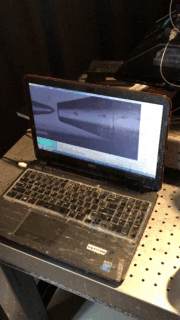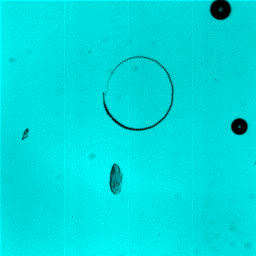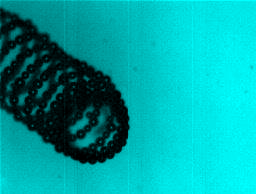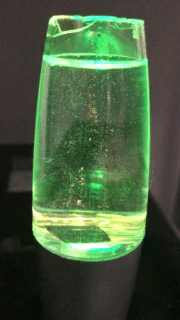
Research









-
Nanotechnology helps to break artificial boundaries between disciplines
-
Our group is interested in both deep fundamental questions and specific engineering applications
Lab of Microfluidics for Microdrops/Capsules fabrication



Catalytic Micro- and Nanomachines outside of Biological Systems
Autonomous movement






Magnetic control
Motion in Channels


Transport of cargo


Micro- Assembler



Nature’s nanomachines support life on Earth during millions of years. We live in the era of machines’ miniaturization and tomorrow’s technological revolution will be the nanomachinery industry. Discovery of nanojet engines capable to self-propel faster than the fastest bacteria was enabled by 3-D nanomembranes technology. If one thinks about nanomachines the first questions to ask: from where the power comes to autonomous nanomachine? Is there a tank with a fuel? Can nanoengine rely on inertia? How to achieve a high motive force in highly viscous environments? How to overcome Brownian diffusion? How to make a complex nanomachine? What are potential applications? Biological cells and motor proteins solved these problems millions of years ago, these “dream nanomachines” work collectively by converting local chemical energy into movement and useful operations. First principles we learn from nature, at the nanoscale there is no need to carry a tank with a fuel - fuel is everywhere. We need small machines to explore the “nanoworld”

We demonstrated autonomous catalytic microtubes (microjet engines) with tunable diameters ranging from micro- to nanoscale and lengths from 50 μm to 1 mm. These results open the door to effective microengines and represent the entry in the Guinness Book of World Records for “the smallest man-made jet engine.

We demonstrated autonomous catalytic microtubes (microjet engines) with tunable diameters ranging from micro- to nanoscale and lengths from 50 μm to 1 mm. These results open the door to effective microengines and represent the entry in the Guinness Book of World Records for “the smallest man-made jet engine. Several attractive methodologies of machine-based functions at the micro- and nanoscale are shown. For instance, catalytic Ti/Cr/Pt microjets, which are integrated on a planar substrate, can operate as “on chip” chemical micropumps by decomposition of hydrogen peroxide fuel into oxygen bubbles and water. When released from a substrate, microjets self-propel autonomously in solution. The incorporation of ferromagnetic layer (Fe) into the rolled-up geometry enables their remote control using external magnetic field. Such microjets were used to load, transport, deliver and assemble multiple cargo particles, including biological cells in bulk solutions and microfluidic channels.

It was demonstrated that for microjets that are fixed to or self-propelled above a platinum-patterned surface, the microengine power/speed can be controlled using a white light source. A change in intensity of the white light leads to a controllable switching “off” and “on” of the microengine power on demand. Light degrades a local concentration of the hydrogen peroxide fuel and surface tension and subsequently suppresses the generation of oxygen microbubbles. In the next step, the diameter of the microjets was rigorously reduced to 250 nm by using hybrid heteroepitaxial/catalytic InGaAs/GaAs/Cr/Pt nanotubes. Due to asymmetry of the rolled-up layers, these nanojets move in corkscrew-like motions and act as “self-propelled nanotools,” which were used in the next step to transport yeast cells and drill into fixed cancer Hela cells.

Although, it is well-known that hydrogen peroxide cannot be used to sustain viable cellular function, it is however conceivable that alternative fuels, such as glucose, might enable operation of such nanotools under biologically compatible conditions. As a first step to achieve this goal, demonstrations were made using metal-enzyme biocatalytic Ti/Au/SAM/Catalase microengines. Synthetic components with competing interactions are well-suited to study the emergence of their collective behavior, such as swarms of large numbers of individuals. Microengines’ self-organization in bistable swarms is shown at the air-liquid interface of the mixture of propylene carbonate and hydrogen peroxide. Microengines act as “water striders.” Buoyed by oxygen bubbles, they self-propel via the microbubble recoiling mechanism and, depending on the bubbles’ sizes, self-organize into swarms due to the meniscus-climbing effect. These reversible swarms depend on the microengine power, which competes against attracting surface tension force. The demonstrated microjet engines show great promise for emerging applications, including biomedical, on-chip, environmental, and robotic micromachines. Furthermore, a key method discovered, entitled “rolled-up nanotechnology on polymers,” allowed for the fabrication of highly parallel arrays of microtubes with multiple functionalities and aimed for different purposes.





